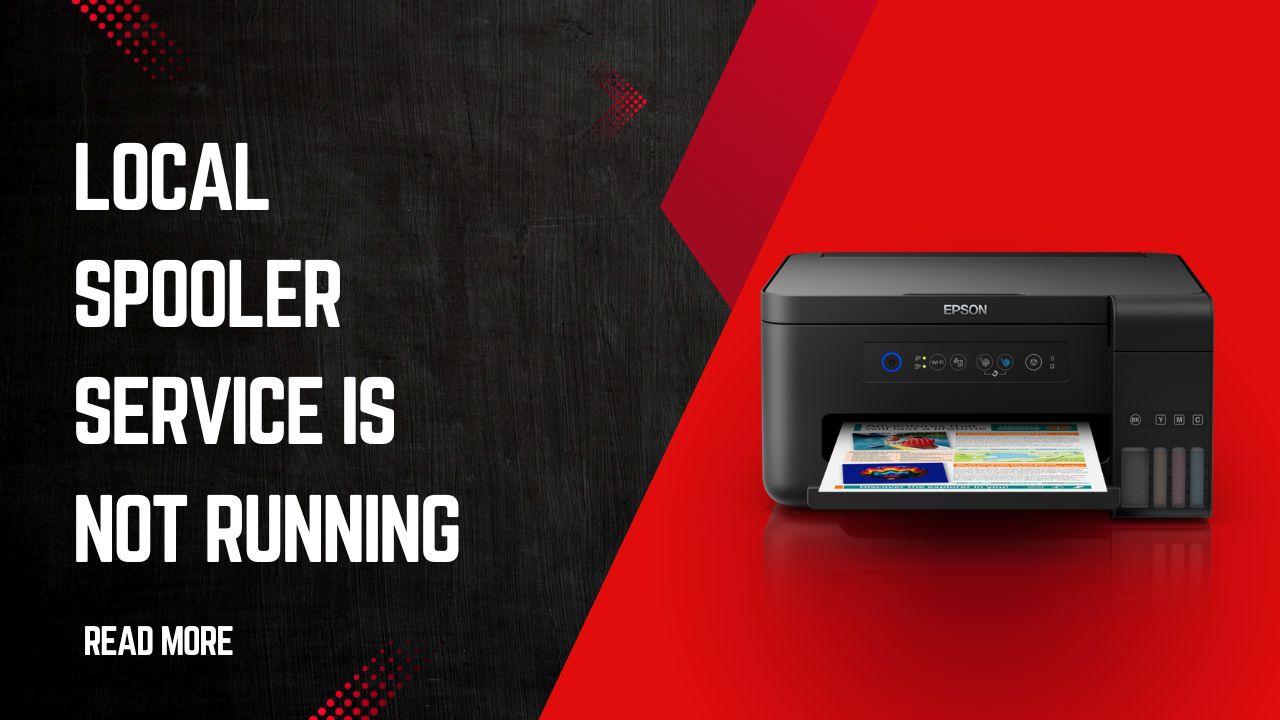Introduction
The local spooler service is not running error is one of the most frustrating printing issues Windows users encounter. This critical system service manages all print jobs on your computer, and when it stops working, your printer becomes essentially useless. Whether you’re trying to print an important document for work or a boarding pass for your flight, this error can bring your productivity to a halt.
The print spooler service acts as an intermediary between your applications and printer, queuing print jobs and managing the printing process. When this service fails, you’ll typically see error messages like “Operation could not be completed” or “The print spooler service is not running.” Fortunately, this issue is usually fixable with the right troubleshooting steps.
What Is the Print Spooler Service?
The Print Spooler service is a Windows system service that manages the printing process on your computer. This essential service temporarily stores print jobs in a queue before sending them to your printer, allowing you to continue working while documents print in the background.
When you click “Print” in any application, the spooler service receives the print job, converts it into a format your printer can understand, and manages the communication between your computer and printer. It also handles multiple print jobs simultaneously, prioritizing them based on various factors.
The service runs automatically when Windows starts and typically operates invisibly in the background. However, various factors can cause it to stop working, including corrupted print jobs, damaged system files, driver conflicts, or malware infections.
Understanding how this service works helps you appreciate why printer functionality completely stops when the local spooler service is not running. Without this crucial intermediary, your computer cannot communicate effectively with any connected printers.
5 Proven Methods to Fix Local Spooler Service Not Running Error
Method 1: Restart the Print Spooler Service
The quickest solution is often simply restarting the spooler service:
Step 1: Press Windows + R keys to open the Run dialog Step 2: Type “services.msc” and press Enter Step 3: Locate “Print Spooler” in the services list Step 4: Right-click on Print Spooler and select “Restart” Step 5: If the service isn’t running, click “Start” instead Step 6: Set the startup type to “Automatic” by right-clicking and selecting “Properties”
Method 2: Clear the Print Spooler Cache
Corrupted files in the spooler cache often cause service failures:
Step 1: Stop the Print Spooler service using Method 1 Step 2: Open File Explorer and navigate to C:\Windows\System32\spool\PRINTERS Step 3: Delete all files in this folder (these are temporary cache files) Step 4: Return to Services and restart the Print Spooler service Step 5: Test printing to verify the fix
Method 3: Use Command Prompt to Reset Spooler
Command line tools provide powerful reset options:
Step 1: Press Windows + X and select “Command Prompt (Admin)” Step 2: Type net stop spooler and press Enter Step 3: Type del /Q /F /S "%systemroot%\System32\Spool\Printers\*.*" and press Enter Step 4: Type net start spooler and press Enter Step 5: Close Command Prompt and test printing
Method 4: Check Print Spooler Dependencies
The spooler service depends on other Windows services:
Step 1: Open Services (services.msc) Step 2: Right-click Print Spooler and select “Properties” Step 3: Click the “Dependencies” tab Step 4: Ensure all dependent services are running (typically Remote Procedure Call and HTTP) Step 5: Start any stopped dependent services first, then restart Print Spooler
Method 5: Update or Reinstall Printer Drivers
Faulty drivers frequently cause print spooler service error issues:
Step 1: Open Device Manager (Windows + X, then select Device Manager) Step 2: Expand “Printers” section Step 3: Right-click your printer and select “Uninstall device” Step 4: Visit the printer manufacturer’s website Step 5: Download and install the latest drivers for your printer model Step 6: Restart your computer and test printing
Additional Tools and Insights
Microsoft provides several built-in tools for diagnosing printing problems. The Windows Troubleshooter can automatically detect and fix common spooler issues. Access it through Settings > Update & Security > Troubleshoot > Additional troubleshooters > Printer.
Registry Editor can also help resolve persistent spooler problems. Navigate to HKEY_LOCAL_MACHINE\SYSTEM\CurrentControlSet\Services\Spooler and verify the service configuration matches default Windows settings.
Third-party utilities like Print Spooler Fix Wizard offer automated solutions for complex spooler problems. However, always download such tools from reputable sources and create system restore points before using them.
Regular maintenance prevents many spooler issues. Schedule periodic clearing of the spooler cache, keep printer drivers updated, and run Windows Update regularly to maintain system stability.
Common Mistakes and Troubleshooting Tips
Mistake 1: Forgetting to run Command Prompt as Administrator Many users attempt spooler fixes without proper permissions. Always use “Run as Administrator” for command-line solutions.
Mistake 2: Not checking for Windows Updates Outdated system files can cause recurring spooler problems. Install pending Windows updates before attempting manual fixes.
Mistake 3: Deleting wrong files Only delete files from the PRINTERS folder, never from the parent spool directory. Deleting system files can cause serious problems.
Mistake 4: Ignoring antivirus software Some antivirus programs interfere with spooler operations. Temporarily disable real-time scanning when troubleshooting, but remember to re-enable it afterward.
Mistake 5: Not restarting after driver changes Driver installations often require system restarts to take effect properly. Always restart your computer after installing or updating printer drivers.
If standard solutions fail, consider checking for malware infections, running System File Checker (sfc /scannow), or performing a system restore to a point when printing worked correctly.
Frequently Asked Questions
Q: Why does the local spooler service keep stopping? A: Common causes include corrupted print jobs, faulty printer drivers, malware infections, or damaged system files. Regular maintenance and keeping drivers updated helps prevent recurring issues.
Q: Can I permanently disable the print spooler service? A: While technically possible, disabling the spooler service will prevent all printing functionality on your computer. It’s better to fix the underlying problem causing service failures.
Q: How do I prevent future spooler service problems? A: Keep printer drivers updated, regularly clear the spooler cache, run Windows updates, use reputable antivirus software, and avoid forcing printer shutdowns during active print jobs.
Q: What should I do if none of these methods work? A: Consider performing a system restore, running a full malware scan, checking for hardware issues, or consulting with a professional technician for advanced diagnostics.
Conclusion
When the local spooler service is not running, it can severely impact your productivity and cause significant frustration. However, this common Windows issue is usually resolvable with the systematic troubleshooting approaches outlined in this guide. Start with the simplest solution—restarting the service—before progressing to more advanced methods like clearing the cache or updating drivers.
Remember that prevention is always better than cure. Regular system maintenance, keeping drivers updated, and following proper shutdown procedures will help you avoid future spooler service problems. If you continue experiencing issues despite trying these solutions, consider seeking professional technical support or performing more advanced system diagnostics.
Most users find success with the first few methods, particularly restarting the service and clearing the spooler cache. By following these windows spooler service fix procedures systematically, you should be able to restore full printing functionality and get back to your important tasks.
For additional Windows troubleshooting resources, visit the official Microsoft Support website for the latest updates and advanced diagnostic tools.
How to Uninstall Printer Driver: 7 Complete Methods for Windows 10/11 Read More.




